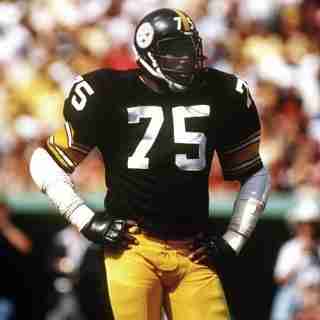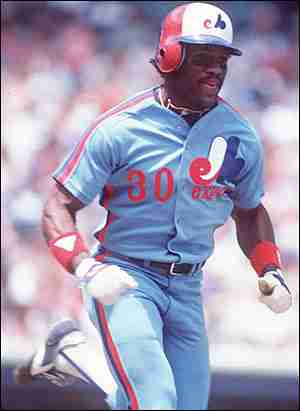
Committee Chairman
Kirk Buchner, "The Committee Chairman", is the owner and operator of the site. Kirk can be contacted at [email protected] .
Teemu Selanne's number to be retired by Anaheim
Aug 02, 2014
Published in
Not in Hall of Fame News

The Anaheim Ducks have announced that they will retire their first number in the history of their franchise. Teemu Selanne, who spent fifteen seasons with the team and announced his retirement from the NHL, a month ago, will see his number 8, hung to the rafters in a ceremony on January 11, 2015 next season. That night will see the Anaheim Ducks face the Winnipeg Jets, the first team that the “Finnish Flash” played for in the National Hockey League.
As a member of the Anaheim Ducks (and prior to the name change the Mighty Ducks of Anaheim) Selanne would generate close to 1,000 (988 specifically) in Southern California and win his lone Maurice Richard Trophy (which was the inaugural) leading the NHL in Goals scored in the 1998/99 season. Selanne would also win the Bill Masterton Trophy in 2006. He would also be a member of the Duck’s first Stanley Cup win in 2007.
The superstar from Finland will likely enter the Hockey Hall of Fame once eligible, and in looking up and Anaheim roster, it is next to impossible to imagine any other member of the team’s history receiving this honor.
At this time, we here at Notinhalloffame.com would like congratulate both Teemu Selanne and the Anaheim Ducks for this upcoming event.
The regular visitors here at Notinhalloffame.com know that we will be looking overall at the major North American sports franchises and how they handle their past stars. This addition will certainly elevate the Ducks in our eventual rankings.
We would like to congratulate both Teemu Selanne and the Anaheim Ducks at this time.

Eric Chavez Retires
Aug 01, 2014
Published in
Not in Hall of Fame News

In a retirement that almost slipped through the cracks here for us at Notinhalloffame.com, Eric Chavez of the Arizona Diamondbacks has announced his retirement. Chavez, who was in his seventeenth season in Major League Baseball, was with the Oakland A’s for thirteen of them, and it was in the Bay Area that he had his most productive campaigns.
Known mostly for his defensive skills, Chavez won six consecutive Gold Gloves at Third Base, though he brought offensive production to the plate with 260 career Home Runs and a more than respectable career Slash Line of .268/.342/.478/.821 and was the American League leader in Walks in 2004. Chavez was also the Silver Slugger recipient in 2002.
Eric Chavez, with a career bWAR of 37.4, had a very good career but not one that will likely be considered ready for Cooperstown. Still, Chavez should be commended for leaving a lot of guaranteed money on the table (which he would have made had he stayed with Arizona) as he stated that he wouldn’t feel right taking money while staying on the disabled list. Chavez’ last few seasons has mostly been on a bench role.
We would like to thank Eric Chavez for the memories, and we are sure that the fans in Oakland are remembering him fondly at this time.
Steelers retire Mean Joe Greene's Number
Jul 31, 2014
Published in
Not in Hall of Fame News

You would think that with the successful history of the Pittsburgh Steelers that they would have a plethora of retired numbers. They don’t, as prior to today’s announcement the Steelers have only retired the number 70 of Ernie Statutner, their star Defensive Tackle from the 1950’s who was a ten time All Pro and first ballot Football Hall of Fame selection. Now, a member of the famed “Steel Curtain” defense of the 1970’s will join Stautner in receiving the ultimate Steeler accolade.
“Mean” Joe Greene was not just a member of the punishing Steelers defense, he was its leader. The fourth overall pick of the 1969 NFL Draft, Greene would make an instant impact and earn his first of ten Pro Bowl selections in his rookie campaign. His trophy case also holds eight All Pro Selections, membership to the 1970’s All-Decade Team, the NFL’s 75th Anniversary Team and a pair of Defensive Player of the Year Trophies, which were bestowed upon him in 1972 and 1974.
Calling Joe Greene “Mean” was not just a clever play to come up with a rhyming nickname. He literally was considered the meanest man in the already vicious sport, and the tales of him challenging the sport’s other legendary tough men (like Dick Butkus) to a fight, and kicking opponents in the groin (which occurred in 1975) are almost as legendary as his distaste for losing.
That desire to win rubbed off on his teammates and the Steelers, which won four Super Bowls that decade. Greene becomes the first from that elite group of talent from those championship squads to earn this honor. We have to wonder if this will usher in the retirement of more numbers from those legendary teams.
Greene was not just a beast on the field; he also was the star of an iconic Coca Cola commercial in the 70’s, possibly the most famous one ever from a Steeler, or at least from a Football player of that era.
It should be noted that nobody has worn the #75 since Joe Greene retired in 1981. This has been a common practice for Pittsburgh as they have also not reissued the numbers of past Steelers (#1) Gary Anderson, (#12) Terry Bradshaw, (#32) Franco Harris, (#36) Jerome Bettis, (#52) Mike Webster, (#58) Jack Lambert, (#59) Jack Ham, (#63) Dermontti Dawson and (#86) Hines Ward, and have not retired them either.
The ceremony will take place on November 2nd, which will see Pittsburgh host their division rival, the Baltimore Ravens.
We would like to congratulate “Mean” Joe Greene and the fans of the Pittsburgh Steelers, many of whom we suspect are celebrating this decision.
Baseball HOF reduces eligibility to 10 Years
Jul 26, 2014
Published in
Not in Hall of Fame News

The Baseball Hall of Fame has announced a major change amongst the voting process. Hence forth, a player will only remain on the ballot for ten years as opposed to the fifteen years that has been the tradition for decades.
Currently, there are three men who will be entering next year in their year of eligibility past ten years who will be grandfathered in. Lee Smith (13th), Alan Trammell (14th) and Don Mattingly (15th and final) will remain on the ballot, though based on the support patterns that the three have had, it is not expected that any of the three will receive the support needed for Cooperstown.
One has to wonder openly if this reduction is to eliminate the controversy sooner surrounding the PED tainted athletes who are currently in the ballot. This would affect Mark McGwire the most, who is entering his ninth year on the ballot, and now has only two more years to gain induction. The former slugger received only 16.9 percent last year, which is his lowest yet. Coincidentally, Barry Bonds and Roger Clemens dropped in support from their first year to their second. They will both only have eight more years on the ballot.
Arguably, the collateral damage (if this is to reduce the length that suspected PED users are on the ballot) would be Tim Raines, who will be on his 8th year. Raines received 46.1 percent of the vote last year down from a high of 52.2 the year before. Nevertheless, Raines has doubled his support from the first year on the ballot, and with seven more years of eligibility, past history indicates his chances for induction were still decent. With only three more years of eligibility left, it will be a tough and shorter road ahead.
Of note, in the past forty years, the reduced eligibility would have caused the following inductees to miss receiving the Hall of Fame call: Bert Blyleven (2011, 14th Year), Jim Rice (2009, 15th Year), Bruce Sutter (2006, 13th Year), Duke Snider (1980, 11th Year), Bob Lemon (1976, 12th Year) and Ralph Kiner (1975, 13th Year).
There is an argument that if it someone can’t get into the Baseball Hall of Fame in ten tries, that another five years won’t make that much more of a difference. While the six names in the previous paragraphs were big names in their day, it would not necessarily downgrade the perception of the Hall of Fame if they were not inducted.
Incidentally, this is the first major change in the Baseball Hall of Fame voting procedures since 1985, when the minimum five percent threshold was instituted to remain eligible.
We are very curious to hear the feedback from the eligible players that will be impacted from this decision.

